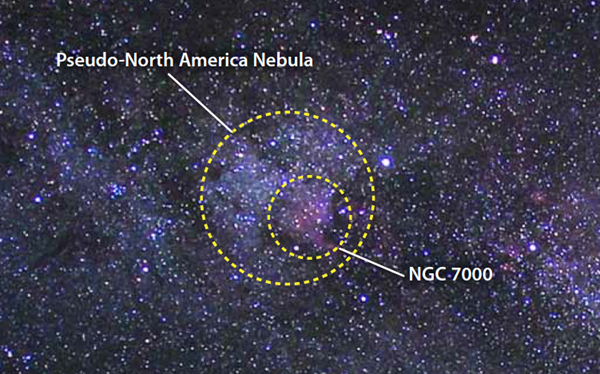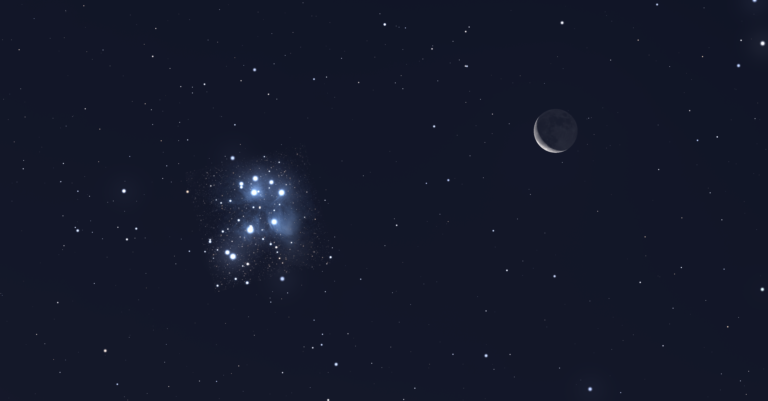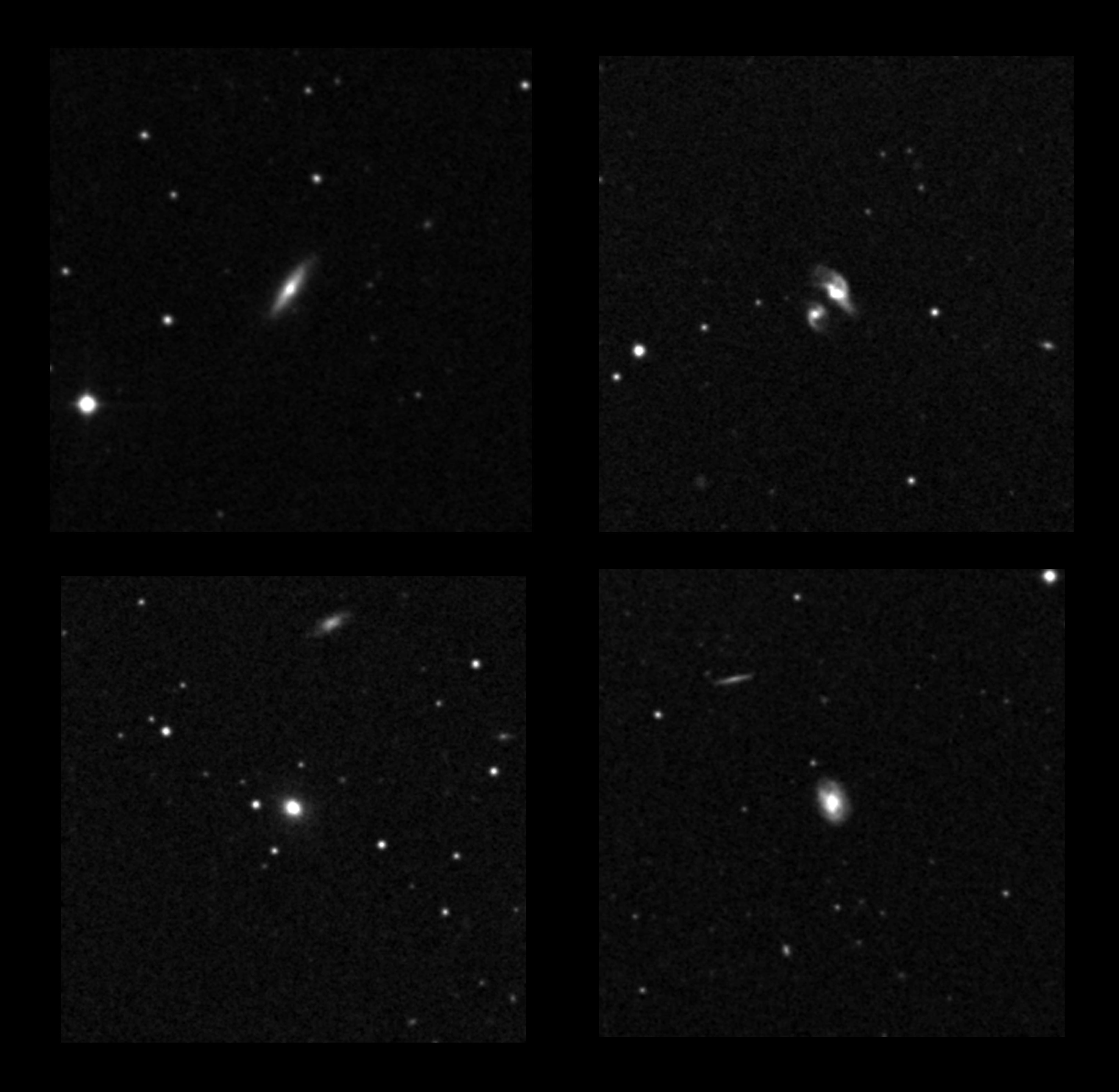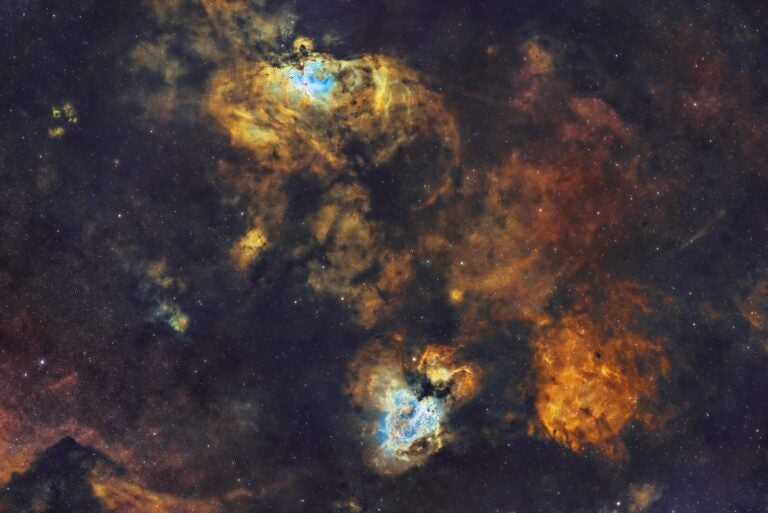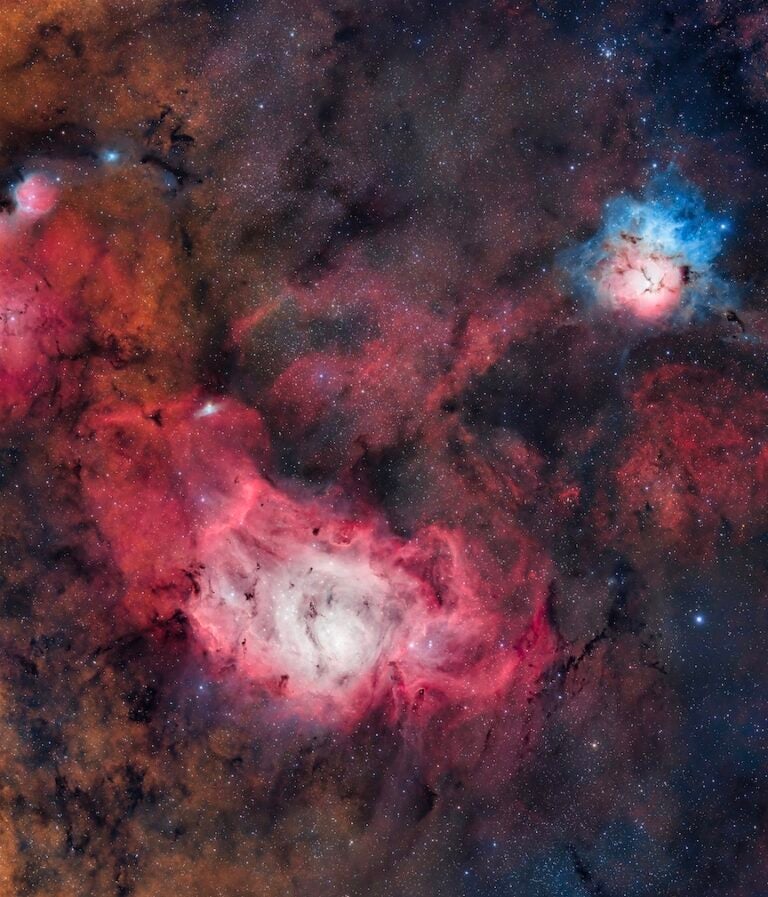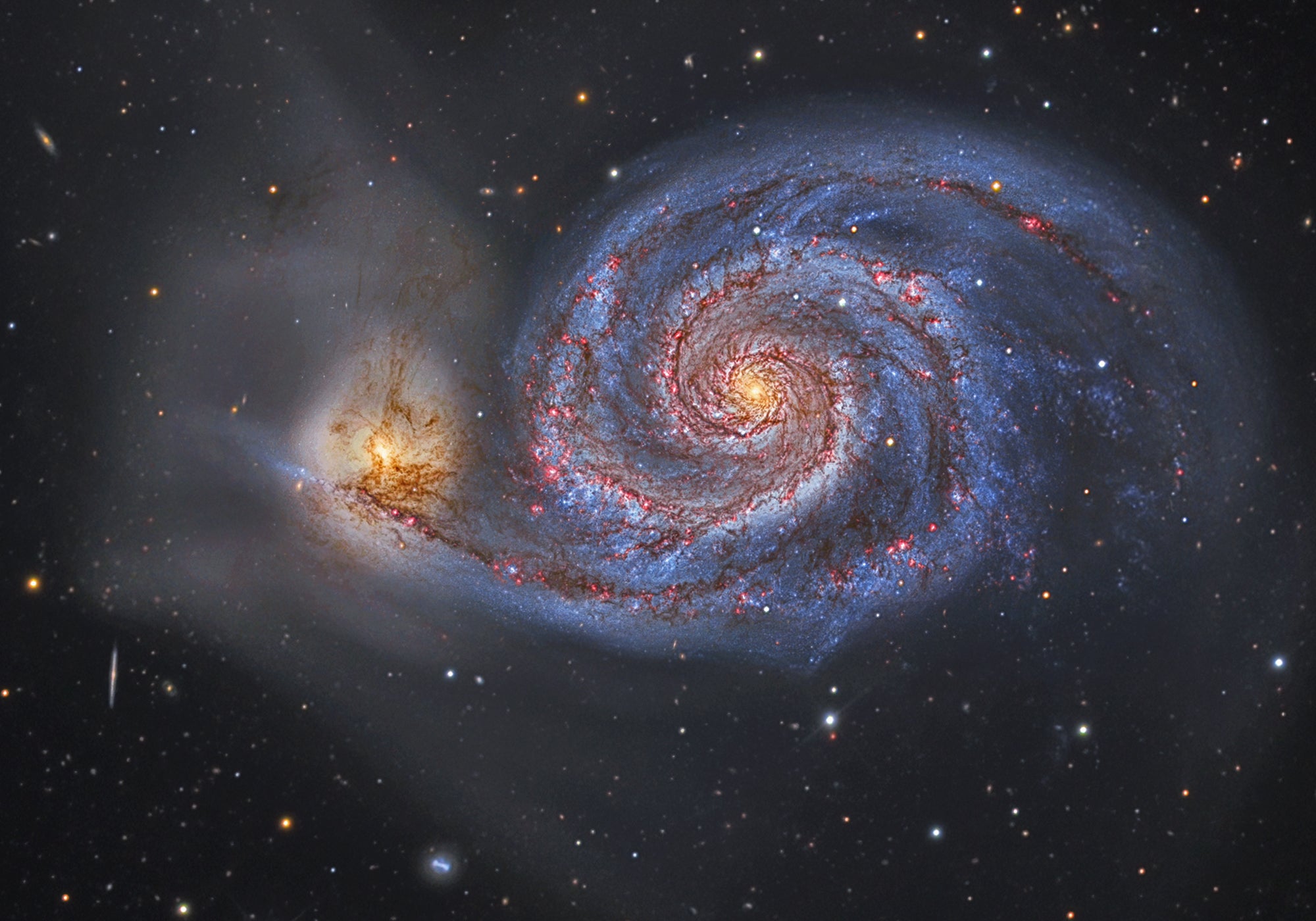This 2° by 1.5° island of misty radiance is an enormous region filled with Hydrogen-II plasma — charged hydrogen found in areas of recent star formation. It is some 2,000 light-years distant and contains the fainter Pelican Nebula (IC 5070). The complex lies 3° east of Deneb, just northwest of 4th-magnitude Xi (ξ) Cygni. Ultraviolet radiation from a massive O-type star strips electrons from the local hydrogen atoms. But after these electrons recombine with the atoms, they emit Hydrogen-alpha light, which appears red. You see mostly this light when you look at the North America Nebula.
NGC 7000’s radiance resembles its continental namesake only by coincidence: Fortunately placed intervening dust clouds, which block emission, create its shape and outline it in darkness. The most prominent cloud appears to trace the eastern seaboard before curling into the Gulf of Mexico like the letter J.
Commonly thought of as a photographic object, the nebula resides in a star cloud that is a fine binocular target. Some keen-eyed observers even have detected the nebula itself without optical aid … or have they?
When I was younger, I, too, used to challenge myself to see the North America Nebula, and see it I did — or so I thought. When I moved to the dark skies of Hawaii, I realized my mistake.
What I thought for years was the North America Nebula actually was the larger star cloud. In images, this complex appears divided into at least four segments because of its size. It mimics the shape and orientation of NGC 7000, but the real North America Nebula lies within, forming a wedge of starlight between the star cloud’s pseudo-Bangor, -Houston, and -Miami.
In the pseudo-continent, Deneb sits near the position of Halifax, Nova Scotia. The entire western edge of NGC 7000 marks the Gulf Coast, from the southern tip of Texas to Tampa, Florida, and beyond. The dark gulf itself embays Xi Cygni, while the star 68 Cygni, 2° to the east, lies near the position of Mexico City. The West Coast of the United States runs 4° to the northwest, where the star 63 Cygni lies on the border of Washington state and British Columbia. The pseudo-North America measures a healthy 5° across, making it more than two times larger in extent than the real North America Nebula.
The real deal
What we see unaided at NGC 7000’s location is mostly a vast star cloud atop the fainter nebula. When stars crowd together, they appear fuzzy, as the eye has difficulty resolving the multitude; that’s why the naked-eye Milky Way looks, well, milky.
It’s hard to tell how much of NGC 7000’s nebulosity we see, if any. To find the real nebula, look for an obvious wedge of bright Milky Way in the aforementioned location. First identify Deneb and Xi Cygni, and then look between these stars for an isolated triangular patch of Milky Way. The dark nebulae in the region will help you separate it from the rest of the surrounding stars. Remember to use averted vision. Staring at it for a prolonged time (which you’re usually told to avoid) enhances dark regions as your eyes become fatigued.
Viewing through small binoculars under dark skies helps bring out the true continental form quite strikingly. Still, it’s difficult to tell whether you’re seeing nebulosity or just congested starlight.
The use of a nebula filter will make the ghostly glow stand out, albeit faintly. The view changes dramatically through larger binoculars, however, when NGC 7000’s brightest regions stand out independently of the surrounding patch of starlight, etched ever so cleanly by rivers of darkness. This view holds true if you switch to looking at the nebula through a telescope with a wide field of view. But consider going naked-eye first!
As always, let me know what you see (or what you don’t see) at sjomeara31@gmail.com.


